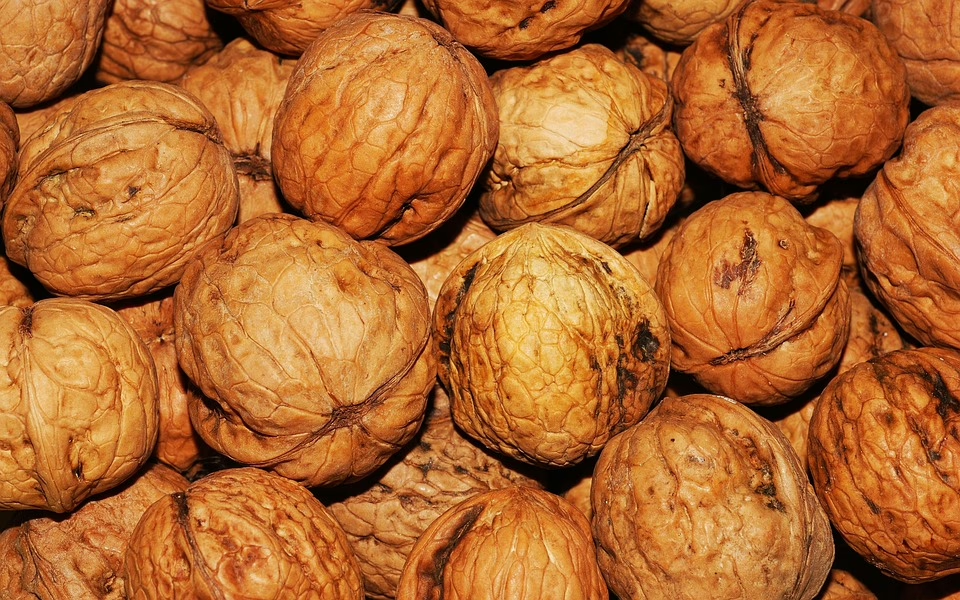Eat More Fiber: Easy Swaps for a Healthier Diet
Introduction
In today’s fast-paced world, where convenience often trumps nutrition, it’s easy to overlook the importance of fiber in our daily diets. Fiber, a type of carbohydrate that our bodies can’t digest, plays a crucial role in maintaining overall health and well-being. From promoting gut health and regulating blood sugar levels to aiding in weight management and reducing the risk of chronic diseases, the benefits of fiber are undeniable. [mfn 1] Yet, despite its vital role, many individuals fall short of the recommended daily intake.
The current Dietary Guidelines for Americans recommend that adults consume between 25 to 38 grams of fiber per day, depending on age and gender. [mfn 2] However, the average American intake hovers around a mere 15 grams, leaving a significant fiber gap that needs to be addressed. [mfn 3] This deficiency can contribute to a host of health problems, including constipation, increased risk of heart disease, type 2 diabetes, and even certain types of cancer.
Fortunately, bridging this fiber gap doesn’t require drastic dietary overhauls or complicated meal plans. Small, incremental changes and smart food swaps can make a significant difference in boosting your fiber intake and reaping the numerous health benefits it offers. This article will delve into the world of fiber, exploring its different types, health benefits, and practical strategies for incorporating more of it into your daily diet through easy and delicious food swaps. We will equip you with the knowledge and tools to make informed choices and embark on a journey towards a healthier, fiber-rich lifestyle.
What is Fiber and Why is it Important?
Fiber is a complex carbohydrate found in plant-based foods, including fruits, vegetables, whole grains, legumes, and nuts. Unlike other carbohydrates, fiber is not digested or absorbed by the body. Instead, it passes relatively intact through the digestive system, providing numerous health benefits along the way.
There are two primary types of fiber:
-
Soluble Fiber: This type of fiber dissolves in water, forming a gel-like substance in the digestive tract. This gel helps to slow down digestion, regulate blood sugar levels, lower cholesterol, and promote feelings of fullness. Excellent sources of soluble fiber include oats, barley, apples, citrus fruits, beans, and peas.
-
Insoluble Fiber: This type of fiber does not dissolve in water. It adds bulk to the stool, helping to prevent constipation and promote regular bowel movements. Insoluble fiber also contributes to feelings of fullness and can help to manage weight. Good sources of insoluble fiber include whole wheat products, bran, vegetables (especially those with skins), and nuts.
Both soluble and insoluble fiber are essential for optimal health, and a balanced intake of both types is recommended. The specific ratio of soluble to insoluble fiber that is ideal for each individual may vary depending on their individual needs and digestive health.
The Health Benefits of a Fiber-Rich Diet
The benefits of a diet rich in fiber extend far beyond digestive health. Here’s a closer look at the key advantages of incorporating more fiber into your daily meals:
-
Improved Digestive Health: Fiber is arguably best known for its role in promoting healthy digestion. Insoluble fiber adds bulk to the stool, making it easier to pass through the digestive system and preventing constipation. Soluble fiber also contributes to digestive health by feeding beneficial gut bacteria, which are essential for maintaining a healthy gut microbiome. A healthy gut microbiome is associated with improved digestion, enhanced immunity, and even better mental health. [mfn 4]
-
Blood Sugar Regulation: Soluble fiber slows down the absorption of sugar into the bloodstream, helping to regulate blood sugar levels and prevent spikes and crashes. This is particularly important for individuals with diabetes or insulin resistance. By promoting stable blood sugar levels, fiber can help to improve energy levels, reduce cravings, and prevent long-term complications associated with high blood sugar. [mfn 5]
-
Cholesterol Reduction: Soluble fiber can help to lower LDL (“bad”) cholesterol levels by binding to cholesterol in the digestive tract and preventing its absorption into the bloodstream. This can significantly reduce the risk of heart disease, stroke, and other cardiovascular problems. [mfn 6]
-
Weight Management: Fiber contributes to feelings of fullness and satiety, which can help to reduce overall calorie intake and promote weight management. Fiber-rich foods tend to be more filling than processed foods, leading to reduced snacking and a more controlled appetite. Furthermore, the slower digestion associated with fiber can help to prevent overeating and promote a feeling of sustained energy. [mfn 7]
-
Reduced Risk of Chronic Diseases: Studies have shown that a diet rich in fiber can help to reduce the risk of several chronic diseases, including heart disease, type 2 diabetes, and certain types of cancer, particularly colon cancer. [mfn 8] The mechanisms behind these protective effects are complex and multifaceted, but they likely involve the combined benefits of fiber on gut health, blood sugar regulation, cholesterol reduction, and inflammation.
-
Enhanced Gut Microbiome: As mentioned earlier, fiber serves as a prebiotic, feeding the beneficial bacteria in the gut. These bacteria play a crucial role in digestion, immunity, and overall health. A diverse and thriving gut microbiome is associated with numerous health benefits, including improved mood, enhanced nutrient absorption, and a reduced risk of autoimmune diseases. [mfn 9]
Easy Food Swaps to Boost Your Fiber Intake
Now that we understand the importance of fiber and its numerous health benefits, let’s explore some practical and easy food swaps that can help you increase your daily fiber intake without sacrificing taste or convenience:
1. Refined Grains to Whole Grains:
- Instead of: White bread, white rice, refined pasta, sugary cereals
- Swap for: Whole wheat bread, brown rice, whole wheat pasta, whole grain cereals (look for at least 3 grams of fiber per serving)
This is one of the easiest and most impactful swaps you can make. Refined grains have been stripped of their bran and germ, which are the most fiber-rich parts of the grain. Whole grains, on the other hand, retain these components, providing a significant boost in fiber, as well as essential nutrients like vitamins and minerals. For example, one slice of white bread typically contains less than 1 gram of fiber, while one slice of whole wheat bread can contain 2-4 grams.
- Tip: When shopping for bread, look for the word “whole” as the first ingredient on the label. Don’t be fooled by labels that say “wheat bread” – it might not be whole wheat.
- Example Meal Swap: Instead of a white bread sandwich for lunch, opt for a whole wheat bread sandwich with plenty of vegetables and lean protein.
2. Processed Snacks to Fruits and Vegetables:
- Instead of: Chips, crackers, candy bars, sugary pastries
- Swap for: Fresh fruits (apples, berries, bananas), raw vegetables (carrots, celery, cucumbers), air-popped popcorn
Processed snacks are often low in fiber and high in sugar, unhealthy fats, and calories. Replacing them with fruits and vegetables is a simple way to increase your fiber intake and nourish your body with essential vitamins and minerals. Fruits and vegetables are naturally low in calories and packed with fiber, making them ideal snacks for weight management and overall health.
- Tip: Keep a bowl of fresh fruits and vegetables readily available at home and in your office to make healthy snacking more convenient.
- Example Meal Swap: Instead of reaching for a bag of chips in the afternoon, grab an apple or a handful of baby carrots with hummus.
3. Low-Fiber Breakfast Options to High-Fiber Breakfast Bowls:
- Instead of: White toast, sugary cereals, pastries
- Swap for: Oatmeal with berries and nuts, whole grain cereal with fruit and yogurt, chia seed pudding
Breakfast is a crucial meal for setting the tone for the rest of the day. Starting your day with a high-fiber breakfast can help to keep you feeling full and energized throughout the morning, preventing cravings and promoting better food choices later in the day.
- Tip: Prepare overnight oats or chia seed pudding the night before for a quick and easy high-fiber breakfast on busy mornings.
- Example Meal Swap: Instead of eating a donut for breakfast, opt for a bowl of oatmeal topped with berries, nuts, and a sprinkle of cinnamon.
4. Meat-Centric Meals to Plant-Based Meals (at least occasionally):
- Instead of: Primarily meat-based dishes
- Swap for: Incorporate more legumes (beans, lentils, peas), tofu, tempeh, and vegetables into your meals
While meat provides essential protein, it is completely devoid of fiber. Incorporating more plant-based meals into your diet is an excellent way to boost your fiber intake and reduce your consumption of saturated fat and cholesterol. Legumes, in particular, are an excellent source of both fiber and protein.
- Tip: Start by incorporating one or two meatless meals into your weekly routine and gradually increase the frequency as you become more comfortable.
- Example Meal Swap: Instead of a burger with fries, opt for a black bean burger on a whole wheat bun with a side salad.
5. Fruit Juice to Whole Fruits:
- Instead of: Fruit juice
- Swap for: Whole fruits
Fruit juice, while it may contain some vitamins and minerals, is often high in sugar and lacking in fiber. When fruits are juiced, the fiber is typically removed, leaving behind a concentrated source of sugar. Eating whole fruits provides the benefits of fiber, which helps to slow down the absorption of sugar and promote feelings of fullness.
- Tip: When you’re craving a sweet drink, opt for water infused with slices of fruit or berries instead of fruit juice.
- Example Meal Swap: Instead of drinking a glass of orange juice with breakfast, eat a whole orange.
6. Low-Fiber Snacks to High-Fiber Seed and Nut Mixes:
- Instead of: Pretzels, rice cakes, or other processed low-fiber snacks.
- Swap for: A trail mix containing nuts (almonds, walnuts, pecans), seeds (chia, flax, sunflower), and dried fruit (raisins, cranberries).
Nuts and seeds are excellent sources of fiber, healthy fats, and protein. They also provide essential vitamins and minerals. Creating your own trail mix allows you to control the ingredients and ensure that you are getting a good balance of nutrients.
- Tip: Make a large batch of trail mix on the weekend and portion it into individual bags for easy snacking throughout the week.
- Example Meal Swap: Instead of snacking on a bag of pretzels, reach for a handful of your homemade trail mix.
7. Using Low-Fiber Thickeners to High-Fiber Thickeners in Cooking:
- Instead of: Cornstarch or white flour to thicken sauces, soups, or stews.
- Swap for: Pureed beans or lentils, ground flaxseed, or chia seeds.
This is a clever way to sneak extra fiber into your meals without significantly altering the taste or texture. Pureed beans and lentils add creaminess and fiber to soups and stews, while ground flaxseed and chia seeds can be used to thicken sauces and gravies.
- Tip: When pureeing beans or lentils, use a food processor or blender to achieve a smooth and creamy consistency.
- Example Meal Swap: Instead of using cornstarch to thicken your chili, blend a can of drained and rinsed kidney beans into the chili.
8. Adding Fiber-Rich Toppings to Existing Meals:
- Instead of: Plain meals without added fiber.
- Swap for: Sprinkle flaxseed, chia seeds, or hemp seeds on yogurt, salads, or smoothies. Add chopped nuts to oatmeal or cereal. Top soups with a dollop of Greek yogurt and a sprinkle of chopped vegetables.
This is a simple way to boost the fiber content of your meals without making major changes to your recipes. A small amount of fiber-rich toppings can make a big difference in your overall fiber intake.
- Tip: Keep a jar of flaxseed, chia seeds, and hemp seeds readily available in your pantry so that you can easily add them to your meals.
- Example Meal Swap: Sprinkle a tablespoon of flaxseed on your yogurt or oatmeal in the morning.
Tips for Gradually Increasing Fiber Intake
While the benefits of a high-fiber diet are undeniable, it’s important to increase your fiber intake gradually to avoid digestive discomfort. Introducing too much fiber too quickly can lead to bloating, gas, and abdominal cramps. Here are some tips for a smooth and comfortable transition to a higher-fiber diet:
- Start Slowly: Begin by adding small amounts of fiber to your diet each day and gradually increase the amount over several weeks.
- Drink Plenty of Water: Fiber absorbs water, so it’s essential to drink plenty of fluids to prevent constipation. Aim for at least eight glasses of water per day.
- Listen to Your Body: Pay attention to how your body responds to increased fiber intake. If you experience any digestive discomfort, reduce your fiber intake slightly and gradually increase it again as your body adjusts.
- Read Food Labels: Pay attention to the fiber content of packaged foods and choose options that are high in fiber.
- Focus on Whole Foods: Prioritize whole, unprocessed foods over refined and processed foods, as they are naturally higher in fiber.
- Be Patient: It may take some time for your body to adjust to a higher-fiber diet. Be patient and persistent, and you will eventually reap the numerous health benefits of a fiber-rich lifestyle.
Potential Side Effects and Considerations
While increasing your fiber intake is generally beneficial, it’s important to be aware of potential side effects and considerations:
- Gas and Bloating: As mentioned earlier, increasing fiber intake too quickly can lead to gas and bloating. This is because the bacteria in your gut need time to adjust to the increased amount of fiber.
- Nutrient Absorption: In rare cases, very high fiber intake can interfere with the absorption of certain nutrients, such as iron and zinc. However, this is typically only a concern for individuals with already compromised nutrient status.
- Medication Interactions: Fiber can interfere with the absorption of some medications. If you are taking any medications, it’s important to talk to your doctor or pharmacist before significantly increasing your fiber intake.
- Individuals with Digestive Disorders: Individuals with certain digestive disorders, such as irritable bowel syndrome (IBS) or Crohn’s disease, may need to be particularly careful when increasing their fiber intake. It’s best to work with a registered dietitian to develop a personalized dietary plan.
Conclusion
Incorporating more fiber into your diet is one of the most impactful steps you can take towards improving your overall health and well-being. From promoting digestive health and regulating blood sugar levels to aiding in weight management and reducing the risk of chronic diseases, the benefits of fiber are numerous and well-documented. By making small, incremental changes to your diet, such as swapping refined grains for whole grains, choosing fruits and vegetables over processed snacks, and adding fiber-rich toppings to your meals, you can significantly increase your daily fiber intake and reap the rewards of a healthier, fiber-rich lifestyle. Remember to increase your fiber intake gradually, drink plenty of water, and listen to your body to ensure a smooth and comfortable transition. Embrace the power of fiber and embark on a journey towards a healthier, happier you!
References
[mfn 1] Anderson, J. W., et al. “Health implications of dietary fiber.” Nutrition Reviews 56.1 (1998): 1-18. [mfn 2] U.S. Department of Agriculture and U.S. Department of Health and Human Services. Dietary Guidelines for Americans, 2020-2025. 9th Edition. December 2020. Available at DietaryGuidelines.gov. [mfn 3] Quagliani, M., and P. Felt-Gunderson. “Closing America’s fiber intake gap: prevalence of low fiber consumption and health implications.” American Journal of Lifestyle Medicine 11.1 (2017): 80-91. [mfn 4] Valdes, A. M., et al. “Role of the gut microbiota in nutrition and health.” BMJ 361 (2018): k2179. [mfn 5] Anderson, J. W., et al. “Dietary fiber and diabetes: a comprehensive review.” Journal of the American College of Nutrition 17.6 (1998): 63-67. [mfn 6] Brown, L., et al. “Cholesterol-lowering effects of dietary fiber: a meta-analysis.” The American Journal of Clinical Nutrition 69.1 (1999): 30-42. [mfn 7] Anderson, J. W., et al. “Health implications of dietary fiber.” Nutrition Reviews 56.1 (1998): 1-18. [mfn 8] McRae, M. P. “Dietary fiber is beneficial for the prevention of cardiovascular disease: an umbrella review of meta-analyses.” Journal of Chiropractic Medicine 16.4 (2017): 289-299. [mfn 9] Rinninella, E., et al. “What is the healthy gut microbiota composition? A changing ecosystem across age, environment, diet, and diseases.” Microorganisms 7.1 (2019): 14.

























Add Comment